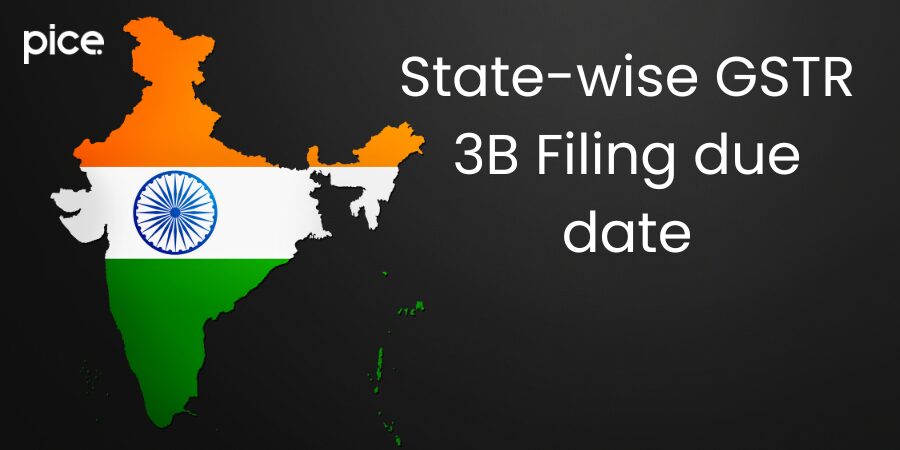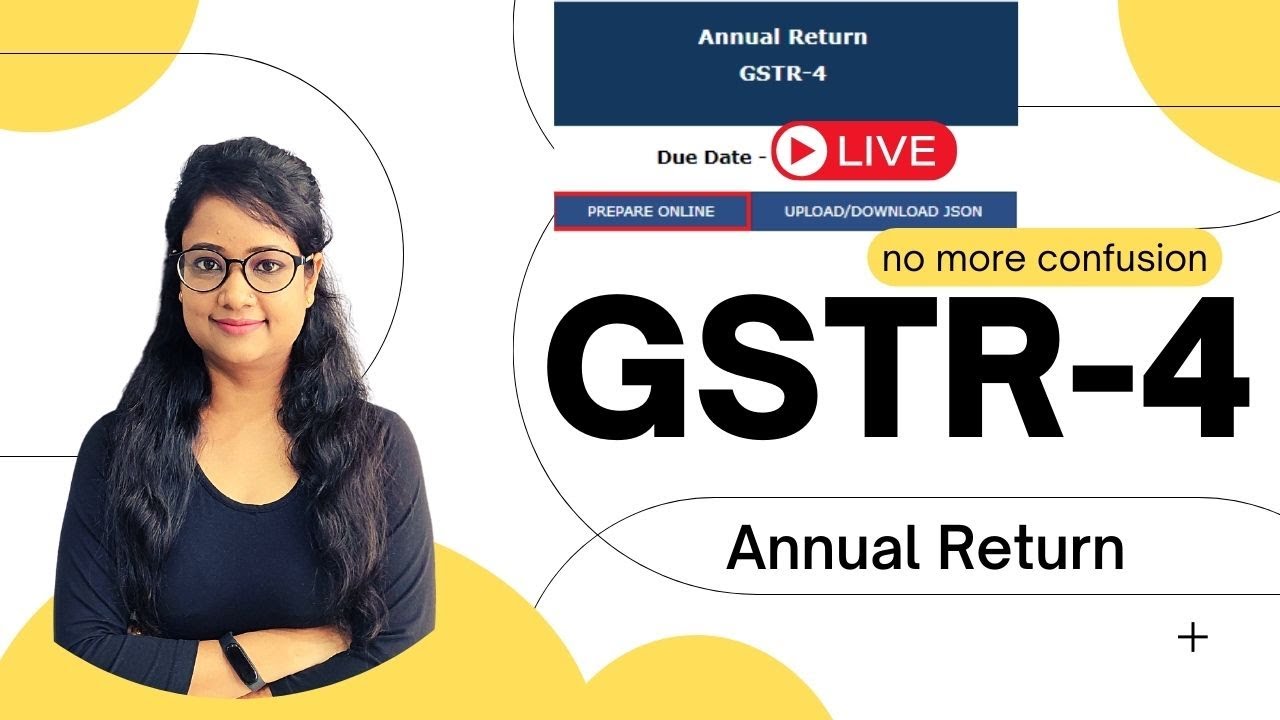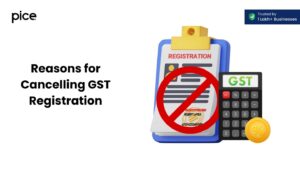GST Filing Due Dates
- 22 Aug 24
- 13 mins

GST Filing Due Dates
- What is form GSTR 3B?
- Who needs to file GSTR 3B?
- GSTR 3B format
- State Wise GSTR 3B Filing due date
- What is form GSTR-1?
- GSTR-1 Filing Due Date (Turnover upto Rs 1.5 Crore)
- GSTR 1 Due Date (Turnover above Rs 1.5 Crore)
- GSTR 1 IFF Quarterly Filing as per QRMP Scheme
- What is form GSTR-4?
- GSTR 4 Annual Filing Due Dates
- What is GSTR-5?
- GST Return 5 (Non-Resident /Foreign Taxpayers) Monthly Filing Due Date
- GST Return 5A (Non-Resident OIDAR Service Provider) Filing Due Date
- What is GSTR-6?
- Due Dates for GSTR 6
- What is GSTR-7?
- GSTR 7 Due Date for TDS Deductor
Key Takeaways
- GSTR-3B: All registered persons must file GSTR-3B monthly to report sales, input tax credit, and tax payments, ensuring compliance with GST regulations.
- GSTR-1: Taxpayers with a turnover up to INR 1.5 crore can file GSTR-1 quarterly, while those with higher turnover must file it monthly.
- GSTR-4: Composition dealers are required to file GSTR-4 annually, summarizing their quarterly returns and tax payments for the financial year.
- GSTR-5: Non-resident taxable persons must file GSTR-5 by the 20th of the month following the relevant tax period or within seven days after the last day of registration.
- QRMP Scheme: The Quarterly Return Monthly Payment (QRMP) scheme simplifies compliance for small taxpayers by allowing quarterly return filing with monthly tax payments.
What is form GSTR 3B?
Form GSTR 3B is a monthly return that businesses registered under the Goods and Services Tax (GST) must file. It is a simplified summary return that captures the details of outward supplies (sales), input tax credit (ITC) claimed, and the payment of taxes. This form is essential for the monthly payment of GST liabilities and must be filed on the GST portal. Failure to file GSTR 3B on time can result in penalties and interest on late payment. It's a crucial part of the compliance process for taxpayers across states like Himachal Pradesh, Madhya Pradesh, and Uttar Pradesh, ensuring that tax liabilities are accurately reported and settled.
Who needs to file GSTR 3B?
Every registered taxpayer under GST, including those from states such as Tamil Nadu, West Bengal, and Andhra Pradesh, is required to file GSTR 3B. This includes regular taxpayers, SEZ units, and SEZ developers. However, certain categories like non-resident taxable persons, composition scheme taxpayers, and input service distributors are exempt from filing the GSTR-3B returns. The form must be filed even if there are no transactions during a tax period, ensuring that the taxpayer remains compliant with the regulations. The timely filing of GST returns is critical for maintaining accurate records of tax liabilities and facilitating the input tax credit claims.
GSTR 3B format
The format of GSTR 3B is designed to simplify the GST Return filing process. It includes various sections such as:
- Details of outward supplies and inward supplies liable to reverse charge.
- Details of inter-state supplies made to unregistered persons, composition taxable persons, and UIN holders.
- Eligible ITC.
- Exempt, nil-rated, and non-GST inward supplies.
- Payment of tax.
- TDS/TCS credit.
This format ensures that taxpayers can easily report their taxable supplies, claim input tax credit, and determine their tax liability. The GST portal provides an online form where taxpayers can fill in these details, making the filing of returns efficient and straightforward.
State Wise GSTR 3B Filing due date

The due date for filing GSTR 3B varies from state to state. Below is a table listing the GSTR 3B filing due dates for different states:
| State | Due Date |
|---|---|
| Himachal Pradesh | 20th of the relevant month |
| Madhya Pradesh | 20th of the relevant month |
| Uttar Pradesh | 20th of the relevant month |
| Nicobar Islands | 20th of the relevant month |
| West Bengal | 20th of the relevant month |
| Arunachal Pradesh | 20th of the relevant month |
| Tamil Nadu | 20th of the relevant month |
| Nagar Haveli | 20th of the relevant month |
| Andhra Pradesh | 20th of the relevant month |
| All Other States | 20th of the relevant month |
💡If you want to pay your GST with Credit Card, then download Pice Business Payment App. Pice is the one stop app for all paying all your business expenses.
What is form GSTR-1?
Form GSTR-1 is a monthly or quarterly return that details all outward supplies of goods and services. It is used by businesses to report their sales and is crucial for the GST system as it forms the basis for the recipient to claim input tax credit. The form includes information such as invoice-level details of taxable goods and services, debit and credit notes, and any amendments made to sales. Timely filing of GSTR-1 ensures accurate reflection of sales transactions, which is essential for compliance and tax administration.
GSTR-1 Filing Due Date (Turnover upto Rs 1.5 Crore)
Taxpayers with an annual turnover of up to INR 1.5 crore can opt to file GSTR-1 on a quarterly basis. The due date for filing this return is the 13th on a monthly basis following the quarter. For example, for the quarter ending in June, the due date would be July 13th. This quarterly return filing option simplifies the compliance process for small taxpayers, allowing them to manage their tax obligations more efficiently. Filing the GSTR-1 on time ensures that the taxpayer's sales data is accurately recorded, facilitating proper input tax credit for the recipients. It is crucial for taxpayers from states like Arunachal Pradesh, Nicobar Islands, and Nagar Haveli to adhere to these deadlines to avoid late filing penalties and ensure smooth business operations.
GSTR 1 Due Date (Turnover above Rs 1.5 Crore)
For taxpayers with an annual turnover exceeding INR 1.5 crore, GSTR-1 must be filed monthly. The due date for this monthly return is the 11th of the following month. For instance, the return for January must be filed by February 11th. This regular filing ensures that the GST system has up-to-date information on all sales transactions, facilitating accurate input tax credit claims and maintaining compliance. Timely filing of GSTR-1 is crucial for businesses in states like West Bengal, Madhya Pradesh, and Andhra Pradesh to ensure they remain compliant with GST regulations and avoid penalties for late filing.
GSTR 1 IFF Quarterly Filing as per QRMP Scheme
The Quarterly Return Monthly Payment (QRMP) scheme allows taxpayers with an aggregate turnover of up to INR 5 crore to file GSTR-1 quarterly while making monthly payments of tax. Under this scheme, the Invoice Furnishing Facility (IFF) allows taxpayers to upload invoices for the first two months of the quarter. This ensures that their buyers can claim input tax credit promptly, maintaining smooth business operations and compliance. For example, if a business in Tamil Nadu opts for the QRMP scheme, it can file GSTR-1 quarterly but must upload its invoices for the first two months to ensure that its buyers can claim ITC without delay. This scheme aids in reducing the compliance burden on small and medium enterprises while ensuring timely tax payment and proper documentation of sales.
What is form GSTR-4?
Form GSTR-4 is an annual return that must be filed by taxpayers who have opted for the Composition Scheme under GST. The Composition Scheme is designed to simplify the compliance process for small taxpayers by allowing them to pay tax at a fixed rate of turnover instead of the regular GST rates. GSTR-4 consolidates the details of quarterly returns filed during the financial year, including the summary of outward supplies, tax paid, and any amendments made. This form captures the total value of inward and outward supplies, tax liability, and details of any advances paid. It helps in reporting the annual turnover and tax liability accurately, ensuring that small taxpayers remain compliant with GST regulations without the need for monthly return filings.
GSTR 4 Annual Filing Due Dates
The due date for filing GSTR-4 is April 30th of the year following the relevant financial year. This annual return must be filed by composition scheme taxpayers to summarize their quarterly returns and provide other relevant details for the entire financial year. Timely filing of GSTR-4 is crucial for maintaining compliance and avoiding penalties for late filing. By adhering to this deadline, taxpayers from various states, including Arunachal Pradesh, Nicobar Islands, and Nagar Haveli, can ensure that their tax obligations are accurately reported and settled. This helps in maintaining a streamlined tax compliance process and prevents any disruptions in business operations due to non-compliance issues.
What is GSTR-5?
Form GSTR-5 is a monthly return that must be filed by non-resident taxable persons who are registered under GST. This form captures details of all outward supplies, inward supplies, and any tax liabilities. Non-resident taxpayers, including foreign entities operating in India, must file GSTR-5 to report their transactions and ensure compliance with Indian GST laws. This return ensures that non-resident entities adhere to the same compliance standards as domestic taxpayers, covering aspects such as sales, purchases, and tax payments. Filing GSTR-5 helps in maintaining transparent and accurate records of the business activities of non-resident taxable persons within India.
GST Return 5 (Non-Resident /Foreign Taxpayers) Monthly Filing Due Date

The due date for filing GSTR-5 is the 20th of the month following the relevant tax period or within seven days after the last day of registration, whichever is earlier. Non-resident taxpayers must adhere to this deadline to ensure timely reporting of their taxable supplies and payment of taxes, maintaining compliance with GST regulations. This timely filing is crucial for avoiding penalties and interest on late payments, ensuring smooth business operations for non-resident entities operating in India. It ensures that the tax authorities have up-to-date information on the transactions conducted by these entities, facilitating efficient tax administration.
GST Return 5A (Non-Resident OIDAR Service Provider) Filing Due Date
Form GSTR-5A is specifically for non-resident Online Information and Database Access or Retrieval (OIDAR) service providers. These providers must file GSTR-5A monthly to report their services and tax liabilities. The due date for GSTR-5A is the 20th of the month following the relevant tax period. Timely filing ensures that non-resident OIDAR service providers remain compliant with Indian GST laws. Filing GSTR-5A accurately and on time helps in avoiding penalties and ensures that these service providers can continue their operations without any compliance-related disruptions. This form is essential for maintaining a clear record of the digital services provided to consumers in India.
What is GSTR-6?
Form GSTR-6 is a monthly return that must be filed by Input Service Distributors (ISDs) under the Goods and Services Tax (GST) regime. An Input Service Distributor is an office of the taxpayer that receives tax invoices for the input services and distributes the tax credit to various branches or units of the same entity. GSTR-6 captures details of all the input tax credit received, distributed, and any amendments made to previous returns. This form helps in ensuring that the distribution of input tax credit is accurately recorded and allocated to the correct branches or units. Filing GSTR-6 is essential for ISDs to manage their tax credits efficiently and maintain compliance with GST regulations.
Due Dates for GSTR 6
The due date for filing GSTR-6 is the 13th of the month following the relevant tax period. Input Service Distributors must adhere to this deadline to ensure timely distribution of input tax credit and compliance with GST regulations. For instance, the return for January must be filed by February 13th. Timely filing of GSTR-6 ensures that the ITC is correctly accounted for and helps avoid any disruptions in claiming the credit by the branches or units receiving the distribution. Accurate and timely filing is crucial for maintaining efficient tax management and avoiding penalties for late filing.
What is GSTR-7?
Form GSTR-7 is a monthly return required to be filed by taxpayers who are mandated to deduct tax at source (TDS) under the Goods and Services Tax (GST) regime. This form is used to provide details of the TDS deducted, TDS liability payable, and any amendments made to previous returns. It captures information such as the GSTIN of the supplier, the amount paid to the supplier, and the amount of TDS deducted. The purpose of GSTR-7 is to ensure proper compliance with the TDS provisions under GST, facilitating transparency and accountability in tax deductions and payments. Timely and accurate filing of GSTR-7 helps in maintaining smooth business operations and ensures that the deducted tax is duly reported and credited to the government.
GSTR 7 Due Date for TDS Deductor
The due date for filing GSTR-7 is the 10th of the month following the relevant tax period. TDS deductors must adhere to this deadline to ensure timely reporting of TDS transactions and payment of the deducted amount to the government. For example, the return for January must be filed by February 10th. Filing GSTR-7 on time helps in avoiding penalties and interest for late filing and ensures compliance with GST regulations. It also facilitates the proper credit of the TDS amount to the respective suppliers, which can be claimed as an input tax credit. Timely filing is crucial for maintaining efficient tax administration and avoiding any compliance-related issues.


















